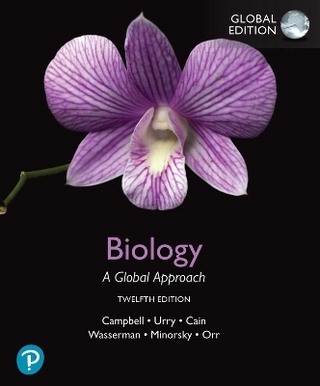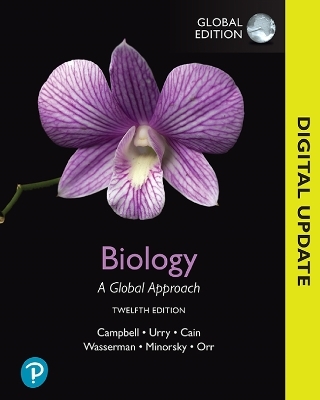
Maldi MS – A Practical Guide to Instrumentation, Methods and Application
Wiley-VCH Verlag GmbH (Hersteller)
978-3-527-61046-4 (ISBN)
- Keine Verlagsinformationen verfügbar
- Artikel merken
The introduction of the matrix assisted laser desorption ionization technique (MALDI) changed mass spectrometry (MS) into a powerful tool for biomedical analysis that is now widely employed in academic as well as industrial laboratories. The 2002 Nobel Prize was awarded for the development of methods for identification and structure analyses of biological macromolecules. MALDI is one of the two mass spectrometric methods besides Electrospray which is universally used for this purpose. This unique book gives an in depth description of the many different applications of MALDI MS, along with a detailed discussion of the technology itself. It will be a much needed practical and educational asset for individuals, academic institutions and companies in the field of bioanalytics.
Franz Hillenkamp is Professor Emeritus at the University of Munster, Germany. He holds a MS degree in electrical engineering from Purdue University, USA, and a PhD from the Technical University of Munich, Germany. Before he was appointed Professor of Biophysics and Medical Physics at Munster in 1986, he held a professorship at the University of Frankfurt, Germany. During the 1980s, he developed the now world famous MALDI technique that was later on shown to be highly useful for the analysis of biomolecules. For his ground-breaking work on mass spectrometry methods, Professor Hillenkamp has received numerous awards, among them the Thompson Medal of the Mass Spectrometry Society, the Fresenius Medal of the German Chemical Society, and the Bergman Medal of the Swedish Chemical Society. Jasna Peter-Katalinic is Associate Professor of Biophysics at the University of Munster, Germany. She was born and educated in Zagreb, Croatia, and obtained her PhD in chemistry at the University of Zurich, Switzerland. After the postdoc time at the Texas A+M University, USA, she obtained the habilitation in physiological chemistry from the University of Bonn, Germany. She pioneered the introduction of modern mass spectrometric methods to structural glycobiology/glycomics, as described in more than 250 publications. Her current interests are in the Human Glycoproteome Initiative and Nanobioanalytics. She was the first recipient of the Life Science Award from the German Society of Mass Spectrometry in 2002.
Preface. List of Contributors. 1 The MALDI Process and Method (Franz Hillenkamp and Michael Karas). 1.1 Introduction. 1.2 Analyte Incorporation. 1.3 Absorption of the Laser Radiation. 1.4 The Ablation/Desorption Process. 1.5 Ionization. 1.6 Fragmentation of MALDI Ions. 1.7 MALDI of Non-Covalent Complexes. 1.8 The Correct Choice of Matrix: Sample Preparation. 1.8.1 Surface Preparation. 1.8.2 Anchor Sample Plates. References. 2 MALDI Mass Spectrometry Instrumentation (Peter B. O'Connor and Franz Hillenkamp). 2.1 Introduction. 2.2 Lasers for MALDI-MS. 2.3 Fragmentation of MALDI Ions 2.3.1 MALDI at Elevated Pressure. 2.3.2 Tandem Mass Spectrometry of MALDI Ions. 2.4 Mass Analyzers. 2.4.1 Axial TOF Mass Spectrometers. 2.4.2 Re.ectron TOF Mass Spectrometers. 2.4.3 Tandem TOF Mass Spectrometers. 2.4.4 Orthogonal TOF Mass Analyzers. 2.4.5 Tandem Mass Spectrometry in oTOF Mass Analyzers. 2.4.6 Ion Detectors and Data Processing in MALDI TOF analyzers. 2.5 Fourier Transform Ion Cyclotron Resonance Mass Spectrometers. 2.5.1 Tandem Mass Spectrometry on FTICR mass Spectrometers. 2.6 Quadrupole Ion Trap Mass Spectrometers. 2.6.1 RF-Only Ion Guides and LIT Mass Spectrometers. 2.6.2 Tandem Mass Spectrometry on QIT Mass Spectrometers. 2.7 Hybrid Mass Spectrometers. 2.7.1 Quadrupole TOF Mass Spectrometers. 2.7.2 Quadrupole FT Mass Spectrometers. 2.7.3 QIT-TOF Mass Spectrometers. 2.7.4 Orbitrap. 2.8 Future Directions. References. 3 MALDI-MS in Protein Chemistry and Proteomics (Karin Hjerno and Ole N. Jensen). 3.1 Introduction. 3.2 Sample Preparation for Protein and Peptide Analysis by MALDI-MS. 3.3 Strategies for Using MALDI-MS in Protein Biochemistry. 3.3.1 Peptide Mass Mapping of Purified Proteins. 3.3.2 Peptide Sequencing by MALDI-MS/MS. 3.3.3 Analysis of Post-Translational Modifications. 3.4 Applications of MALDI-MS in Proteomics. 3.4.1 Protein Identification by MALDI-MS Peptide Mass Mapping. 3.4.2 Quantitation of Proteins by MALDI-MS. 3.5 Computational Tools for Protein Analysis by MALDI-MS. 3.6 Clinical Applications of MALDI-MS. 3.7 Conclusions. References. 4 Microprobing and Imaging MALDI for Biomarker Detection (Bernhard Spengler). 4.1 Introduction. 4.2 History of Mass Spectrometry Imaging and Microprobing Techniques. 4.3 Visualization of Mass Spectrometric Information. 4.4 MALDI in Micro Dimensions: Instruments and Mechanistic Differences. 4.5 The Matrix Deposition Problem in High-Resolution Imaging. 4.6 Organisms, Organs, Tissues and Cells: Imaging MALDI at Various Lateral Resolutions. 4.7 Whole-Cell and Single-Cell Analysis: Prospects and Limitations. 4.7.1 Cellular Analysis. 4.7.2 Individually Isolated Cells. 4.7.3 Direct Cellular and Subcellular Imaging. 4.8 Cell Sorting and Capturing. 4.9 Future Areas of Application. 4.10 Identification and Characterization: Limitations Due to Mass Resolution and Accuracy. 4.11 Conclusions. References. 5 MALDI-MS of Nucleic Acids and Practical Implementations in Genomics and Genetics (Dirk van den Boom and Stefan Berkenkamp). 5.1 Challenges in Nucleic Acid Analysis by MALDI-MS. 5.2 Genetic Markers. 5.2.1 Restriction Fragment Length Polymorphisms (RFLPs). 5.2.2 Microsatellites/Short Tandem Repeats (STRs). 5.2.3 Single Nucleotide Polymorphisms (SNPs). 5.2.3.1 The HapMap. 5.3 Assay Formats for Nucleic Acid Analysis by MALDI-MS. 5.4 Applications in Genotyping. 5.4.1 MALDI-TOF MS SNP and Mutation Analysis. 5.4.1.1 The PinPoint Assay. 5.4.1.2 The PROBE Assay. 5.4.1.3 The MassEXTEND, hME Assay. 5.4.1.4 The GOOD Assay. 5.4.1.5 The Invader Assay. 5.4.1.6 Incorporation and Complete Chemical Cleavage Assay. 5.4.1.7 The Restriction Fragment Mass Polymorphism Assay. 5.4.2 MALDI-TOF MS for Haplotyping. 5.5 Applications of Comparative Sequence Analysis. 5.5.1 Base-Specific Cleavage of Amplification Products. 5.5.1.1 DNA-Based Methods. 5.5.1.2 RNA-Based Methods. 5.5.1.3 Analysis of Base-Specific Cleavage Patterns. 5.6 Applications in Quantitation of Nucleic Acids for Analysis of Gene Expression and Gene Amplification. 5.6.1 Analysis of DNA Mixtures and Allele Frequency Determinations in DNA Pools 165 5.6.2 Analysis of Gene Expression 169 References 172 6 MALDI-MS of Glycans (Dijana S!agi and Jasna Peter-Katalinic). 6.1 Introduction. 6.2 N-Glycosylation. 6.2.1 Release of N-Glycans. 6.2.1.1 Chemical Release. 6.2.1.2 Enzymatic Release. 6.2.2 Sample Preparation for MALDI-MS. 6.2.2.1 Contaminant Removal. 6.2.2.2 Derivatization. 6.2.3 Matrices. 6.2.3.1 Matrices for Neutral N-Glycans. 6.2.3.2 Matrices for Acidic N-Glycans. 6.2.4 Structural Analysis. 6.2.4.1 Fragmentation of N-Glycans. 6.2.4.2 Post-Source Decay. 6.2.4.3 Collision-Induced Decomposition. 6.2.4.4 Use of Exoglycosidase Sequencing. 6.2.5 MALDI-MS of Intact Glycoproteins. 6.2.6 Determination of N-Glycosylation Site Occupancy. 6.3 O-Glycosylation. 6.3.1 Release of O-Glycans from the Parent Protein. 6.3.2 MALDI-TOF MS of Released O-Glycans. 6.3.3 Determination of O-Glycosylation Sites by PSD-MALDI-TOF MS. 6.3.4 Determination of O-Glycosylation Status by MALDI-TOF MS. 6.3.5 Identification of O-Glycosylation in Proteins by In-Gel Alkylaminylation. 6.3.6 O-Glycoforms in Urine: Identification of O-Glycosylated Amino Acids in Mixtures by MALDI-MS and Computer Assignment. 6.3.7 Identification of the Non-Covalent O-Glycoprotein Dimer by Blot IR-MALDI-MS. 6.3.8 Determination of Overall O-Glycosylation of a Glycoprotein by Permethylation. References. 7 MALDI-MS of Lipids (Jurgen Schiller). 7.1 Introduction. 7.1.1 Why are Lipids of Interest? 7.1.2 Problems in Lipid Analysis: A Brief Comparison of Methods. 7.1.3 Analysis of Lipids by MS. 7.1.4 Capabilities and Limitations of MALDI-TOF MS in the Lipid Analysis. 7.1.5 Choosing an Appropriate Matrix. 7.1.6 Sample Preparation, Extraction and Purification. 7.2 Analysis of Individual Lipid Classes and their Characteristics. 7.2.1 The Apolar Lipids: Diacylglycerols, Triacylglycerols, Cholesterol and Cholesteryl Esters. 7.2.2 Zwitterionic Phospholipids: Sphingomyelin, Phosphatidylcholine and Phosphatidylethanolamine. 7.2.3 Acidic Phospholipids: Phosphatidic Acid, Cardiolipin, Phosphatidylglycerol, Phosphatidylserine, Inositol and Higher Phosphoinositides and their Lysolipids. 7.2.4 Free Fatty Acids. 7.3 MALDI-TOF MS of Typical Lipid Mixtures. 7.3.1 Vegetable Oils and Frying Fats. 7.3.2 Plant and Tissue Extracts. 7.3.2.1 Brain Phospholipids. 7.3.2.2 Eye Lens Phospholipids. 7.3.2.3 Other tissues. 7.3.3 Important Body Fluids and Cells of the Human Body. 7.3.3.1 Blood. 7.3.3.2 Spermatozoa and Neutrophils. 7.3.4 Characterization of Typical Oxidation Products of Lipids. 7.4 Quantitative Aspects of MALDI-TOF MS of Lipids. 7.4.1 Approaches Used To Date. 7.5 Problems, and their Potential Solution. 7.5.1 "Small" Molecules and Fragmentation Products. 7.5.2 Auxiliary Reagents. 7.6 Summary and Outlook. References. 8 MALDI-MS for Polymer Characterization (Liang Li). 8.1 Introduction. 8.2 Technical Aspects of MALDI-MS. 8.2.1 Sample Preparation Issues. 8.2.1.1 Matrix. 8.2.1.2 Cationization Reagent. 8.2.1.3 Solvent. 8.2.1.4 Solvent-Free Sample Preparation. 8.2.2 Instrumental and Measurement Issues. 8.2.2.1 Mass Resolution and Accuracy. 8.2.2.2 Sensitivity and Dynamic Range. 8.2.2.3 Mass Range. 8.2.2.4 MS/MS Capability. 8.2.3 Data Processing Issues. 8.3 Attributes and Limitations of MALDI-MS. 8.4 Conclusions and Perspectives. References. 9 Small-Molecule Desorption/Ionization Mass Analysis (Lucinda Cohen, Eden P. Go, and Gary Siuzdak). 9.1 Introduction. 9.2 Matrix Choices for Small-Molecule MALDI. 9.2.1 Organic Matrices. 9.2.2 Inorganic Matrices. 9.2.3 Liquid Matrices. 9.2.4 Matrix-Free Approaches. 9.3 Sample Preparation. 9.3.1 Electrospray Sample Deposition. 9.3.2 Analyte Derivatization. 9.3.3 Analyte Pre-Concentration. 9.3.3.1 Prestructured Sample Supports. 9.3.3.2 DIOS with Solid Liquid Extraction. 9.3.4 Matrix Suppression. 9.4 Qualitative Characterization of LMM Molecules. 9.5 Analyte Quantitation by MALDI. 9.5.1 Selection of IS. 9.5.2 Methods for Improving Quantitative Performance. 9.5.3 Quantitation of Pharmaceutical Compounds. 9.5.4 Enzyme Activity and Inhibition Studies. 9.5.5 Quantitative Analysis of Samples from Complex Biological Matrices. 9.5.6 Environmental Applications of Quantitative MALDI. 9.6 Separation Methods Coupled with MALDI and DIOS. 9.6.1 TLC-MALDI. 9.6.2 Capillary and Frontal Af.nity Liquid Chromatography. 9.7 Conclusions. References. Index.
| Verlagsort | Weinheim |
|---|---|
| Sprache | englisch |
| Maße | 170 x 240 mm |
| Gewicht | 856 g |
| Themenwelt | Naturwissenschaften ► Biologie |
| Naturwissenschaften ► Chemie | |
| ISBN-10 | 3-527-61046-4 / 3527610464 |
| ISBN-13 | 978-3-527-61046-4 / 9783527610464 |
| Zustand | Neuware |
| Haben Sie eine Frage zum Produkt? |
aus dem Bereich

